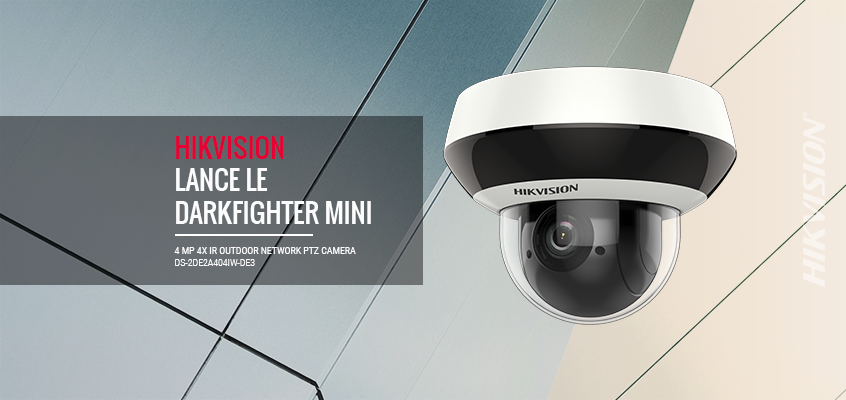Hikvision Amérique du Nord lance de nouvelles caméras de surveillance PTZ réseau DarkFighter de 2,5 pouces

Hikvision Amerique du Nord a lancé une nouvelle série de caméras de surveillance PTF Darkfighter Network 2,5 pouces, dotées de puissantes fonctions, telles qu'un objectif varifocal motorisé de 2,8 mm à 12 mm et une plage IR allant jusqu'à 65 pieds (modèles I) qui aide les professionnels de la sécurité à minimiser les inquiétudes.
Les caméras réseau PTZ de 2,5 pouces supportent des fonctionnalités intelligentes telles que le croisement de lignes, la détection d'intrusion, la détection de changement de scène et la détection de visage. La nouvelle série est disponible en 2 MP et 4 MP.
« La taille offre une polyvalence d’utilisation accrue dans des situations nécessitant un puissant appareil photo qui prend peu de place. Bien qu'elles soient petites et compactes, les caméras sont également équipées d'un matériel robuste (IR), d'un ensemble de fonctionnalités intelligentes et d'une compression vidéo H.265 + pour une bande passante et un stockage améliorés. De plus, la technologie DarkFighter fournit une excellente qualité d'image et de vidéo dans des conditions de faible luminosité », a déclaré Damon Chou, chef de produit Hikvision.
La caméra réseau PTZ IR extérieure Hikvision DS-2DE2A204IW-DE3 et la caméra d'extérieur DS-2DE2A204W-DE3
Les caméras réseau PTZ sont des modèles 2 MP avec capteurs CMOS à balayage progressif, zoom optique 4x, zoom numérique 16x, protection 120 dB WDR, IP66 et IK10 et résolution jusqu’à 1920x1080 à 30 ips (images par seconde).
Les caméras réseau PTZ IR extérieures Hikvision DS-2DE2A404IW-DE3 et les caméras d'extérieur DS-2DE2A404W-DE3
Les caméras réseau PTZ sont des modèles 4 MP dotés de capteurs CMOS à balayage progressif dotés d'un zoom optique 4x, d'un zoom numérique 16x, d'une protection 120 dB WDR, IP66 et IK10, ainsi que d'une résolution pouvant atteindre 2560x1440 à 24 images par seconde.
La technologie DarkFighter fournit des images en couleur dans des conditions de luminosité extrêmement faibles allant jusqu'à 0,005 Lux et jusqu'à 0 Lux avec IR. Tous les modèles incluent des capacités 12 VDC et PoE.
Pour plus d'informations sur les équipements de sécurité Hikvision, visitez notre site en ligne.
